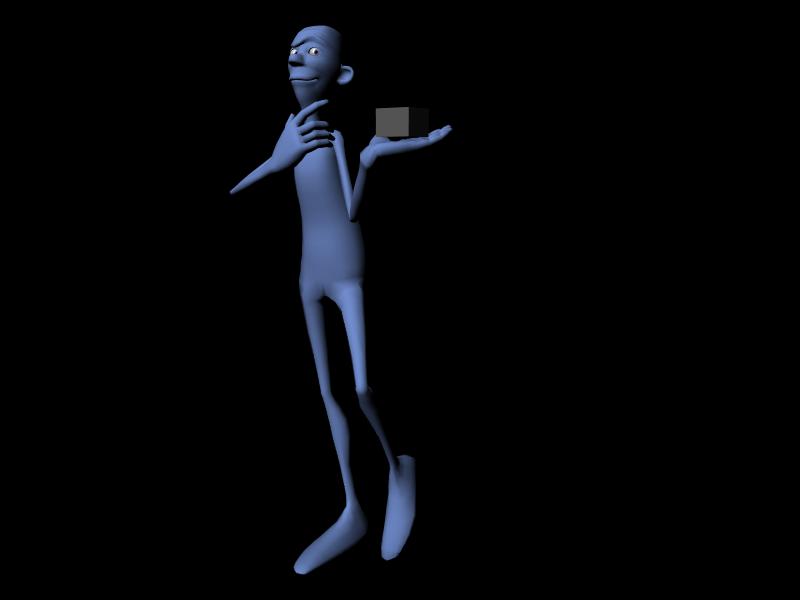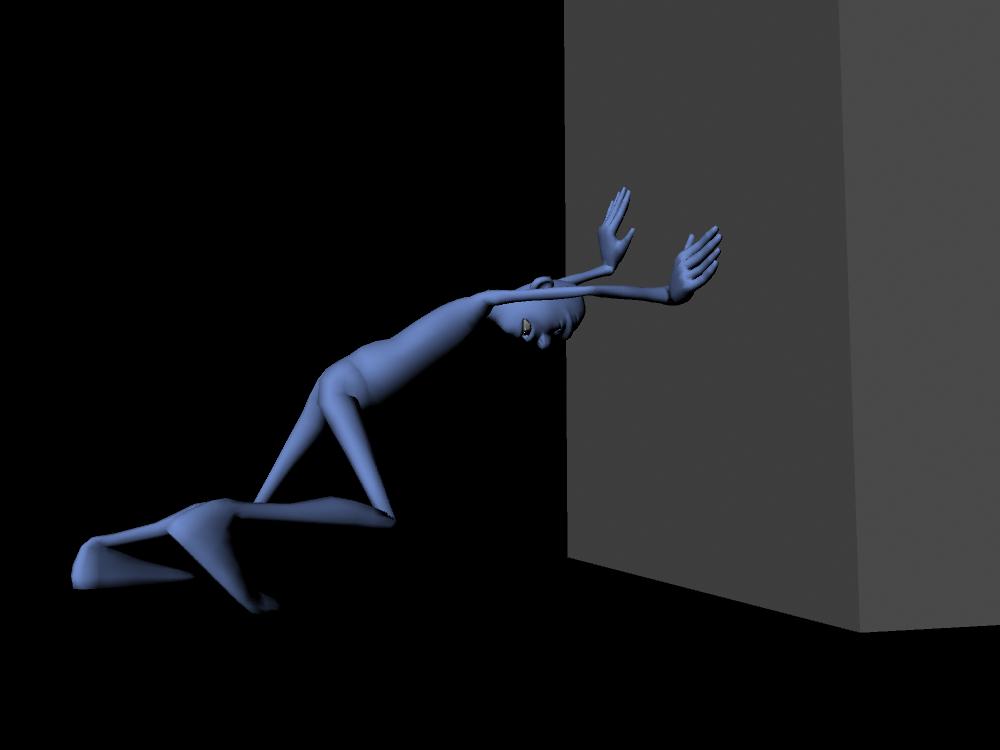Project 6a: Posing
For this assignment we will be working with a complex character rig to create various poses. Posing is a key skill in convincing animation and will help you develop a sense of weight and balance in your characters. Pose the character in each of the eight poses below and render a frame of each pose. You will find it helpful to act out the character's actions yourself to give you an idea how the weight should be distributed.
You will find this a useful reference on posing. Of crucial importance are the concepts of line of action and silhouette.
The line of action is an imaginary line that travels through your pose. These lines are usually broad "C" or "S" curves that define the direction of an action and/or how forces are applied. For example, the line of action of a character pushing a large object would originate at their feet, curve up their back, and finally end at their hands where pressure is applied to the object. It is also important to note these lines are never completely straight. Even mundane actions such as a character simply standing and doing nothing should have a curved line of action, if only slightly. In general, lines of action make your poses more dynamic and believable.
The silhouette refers to just the outline of your character, which means that you should always pose your character relative to a fixed camera perspective. You can disable the normal shading and see just the character's silhouette by hitting the 7 key. What this really does is display the scene with lighting, but since there are no lights in the scene, the character will display as all black. You will want to view the silhouette from time to time to assess how your poses are progressing, as poses should be able to be read by the silhouette alone.
We will be using the Basic Guy rig for this assignment. When framing your renders, make sure that all of the character is in frame. While facial expressions can add a lot of emotion to a pose, for this assignment focus on the overall pose and silhouette of the character.
- Pose the character so that it is carrying an object that is light.
- Pose the character so that it is carrying an object that is heavy.
- Pose the character balancing with one leg in lifted in front of it.
- Pose the character balancing with one leg lifted high to the side. The character does not have to be holding their leg like in the examples.
- Pose the character pulling a rope.
- Pose the character pushing something large and heavy while facing it.
- Pose the character so that it conveys the emotion of being sad.
- Pose the character so that it conveys the emotion of being frightened.



















